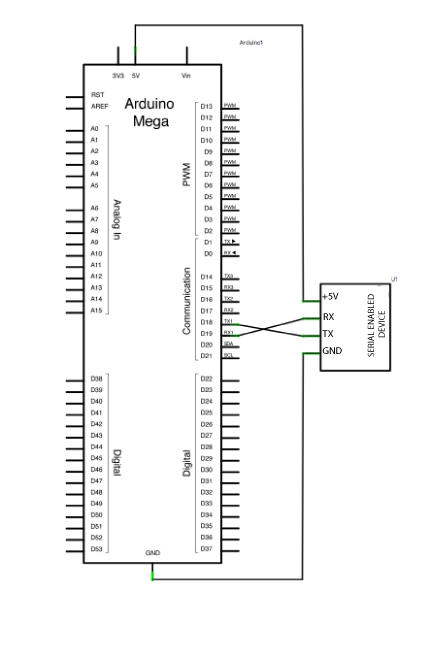Komunikasi Serial Arduino


Sometimes when working on an Ardunio project, it is necessary to send data back and forth between a computer. Now, you could use something like the, which would send data over a network, but if you want something easy and free the simplest solution is USB communication. There are several ways to approach Ardunio USB communication, but in this case we will be using on the computer side to send and receive information. As such, this instructable expects that you have some prior knowledge of Ardunio, and of Python (or other similar scripting language). Python is a versatile, easy to learn, and easy to use scripting language.
Its power, and huge library of user-created modules (everything from to ) makes it an ideal language for a wide verity of computer side tasks. You could easy parse network information and make an Arduino visualizer, create a game controller, or make a keypad computer login system. Arduino with Python opens up a word of possibilities. On the Computer side of things, we will be using a Python module called. PySerial, coincidentally, allows for the use of serial connections with Python. Installing PySerial on Windows is a pretty simple process.
Oct 04, 2016 komunikasi serial arduino dengan menyalakan 1 led Sebelum kita membuat suatu program rangkaian,kita harus mengetahui dasar dari komunikasi serial,berikut ini saya akan membahas apa itu komunikasi serial serta fungsinya terlebih.
Note: this 'ible assumes you have Python 2.* installed! If you do not, PySerial will still work, but you may need to change the code slightly to fit with the new standards. To install on Windows, simply visit, download the Windows binary, and run it (at the time of writing, it's pyserial-2.7.win32.exe). Afterwards, test your installation by opening up a new instance of the Python interpreter, and running: import serial.
Office 2016 kms host. To initiate a connection with the Arduino from Python, we first have to figure out which COM Port the Arduino is on. Objectdock stack docklet for windows 7. This task is luckily made simple by the Ardunio programming environment. Simply look in the bottom right corner of your Arduino IDE, and you will see some text containing the COM Port number. We will use this to initiate our Python serial connection, like so: arduino = serial.Serial('COM1', 115200, timeout=.1) The above code will create a new serial object called 'ardunio' on 'COM1' with a '115200' and a.1 second timeout. It is extremely important that you keep the chosen baud-rate on hand, as it must match exactly with the baud-rate on the Ardiuno side of things.
44 thoughts on “ Raspberry Pi and Arduino Connected Over Serial GPIO” • Siva Sankar Hello, I used the same wiring method and the data exchange is good. However it is not reliable, when i run a ping pong data exchange simultaneously for thousands and millions of time in a loop, and at the same time performing some motor controls from arduino (Motors are known to draw current up to 0.8 A), the data is getting corrupted. The data corruption happens when the setup demands more current (for controlling motors).
Measures taken by me to solve this problem, > i have added shield to the wires Tx and Rx. > grounding is verified properly. Still i dont know how when the setup draws more current, the data on Tx and Rx is corrupted. Any help will be appreciated. ↓ • roger Hello, I have a similar situation.
I’d like to connect an Arduino Uno to a 3.3v sensor through RX/TX Now I understand Arduino-TX -> sensor-RX needs a voltage divider ( so the 5V of the arduino doesn’t break the sensor). Now I’d expect the 3.3V from the sensor TX to Arduino-RX to be “safe”, however you mention in some situations the Arduino-RX can be at 5V, which would then go to the sensor and might break it So question ( assuming not using a level-divider) – why not have 2 voltage dividers? ( for both TX-RX and RX-TX connections) – could we put a schottky diode between the “Arduino-RX” to “sensor-TX”, to make sure there can only be a flow from the sensor to the Arduino, and and the diode blocks the other way around ( note: n00b here, so I might be completely misunderstanding it ). ↓ • Ralf S Hey Oscar! I just found your (super) instructions, and wanted to go through it. Funny, I already fail on the very beginning. On my Raspi3 the /etc/inittab file doesn’t exist.